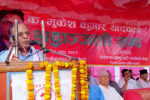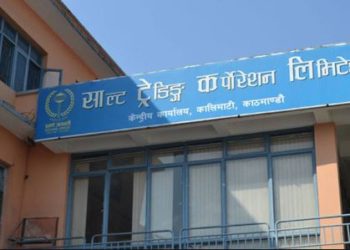The Electric Vehicle (EV) sector in Nepal has become a key focus of government initiatives aimed at promoting sustainable transportation.
Although the EV market remains relatively small, it is experiencing steady growth. The number of electric vehicles on the roads—including electric cars, two-wheelers, and three-wheelers like e-rickshaws—has been increasing, signaling a gradual shift toward electric mobility.
Both local and international companies are starting to invest in Nepal’s burgeoning EV market, recognizing its growth potential as these vehicles offer several significant advantages that make them an attractive option for many consumers in Nepal.
One primary benefit is their lower operating costs compared to conventional vehicles.
Moreover, electric vehicles are generally cheaper than gasoline or diesel ones, resulting in substantial savings on fuel expenses.
Despite growing awareness of the environmental benefits of EVs, many potential buyers remain concerned about the perceived risks and the adequacy of the charging infrastructure.
Additionally, EVs have fewer moving parts than internal combustion engine (ICE) vehicles, which reduces the frequency and cost of maintenance and repairs.
This lower cost of operation can help offset the higher initial purchase price of EVs over time.
Supportive government policies have further enhanced the appeal of electric vehicles.
Subsidies and reduced taxes have made EVs more financially accessible, aligning with global trends toward cleaner transportation solutions aimed at reducing carbon footprints and improving air quality.
The expansion of charging infrastructure is another positive development. With nearly 270 charging stations established across the country, efforts to alleviate “range anxiety” are progressing.
This increased availability of charging stations is crucial for making electric vehicles more practical and convenient, thus supporting broader adoption.
Looking ahead, technological advancements promise to further boost the EV market in Nepal.
Innovations in battery technology are expected to address current limitations related to range and charging efficiency, enhancing the appeal of electric vehicles.
Emerging technologies such as Vehicle-to-Grid (V2G) systems and autonomous driving could also transform the sector, creating new opportunities for a more dynamic and sustainable energy ecosystem.
Despite these advantages, several challenges hinder the growth of the electric vehicle sector in Nepal.
While the number of charging stations is growing, access remains limited, particularly in rural areas.
The current infrastructure is insufficient for long-distance travel, making EVs impractical for users outside urban centers.
Additionally, some electric vehicles may not match the performance of traditional gas-powered engines, which could deter potential buyers who prioritize speed and efficiency.
The evolving taxation framework also poses challenges. Recent increases in customs and excise duties have created market uncertainty.
For instance, customs duties for 50 kW vehicles have risen from 10% to 15%, while duties for larger vehicles have surged to 60%.
These rising tax rates could hinder market growth by making EVs less affordable and discouraging investment in advanced models.
With strategic planning and continued government support, Nepal has the potential to lead in sustainable transportation and overcome the obstacles currently impeding the widespread adoption of electric vehicles.
Safety concerns and public perception issues further complicate the adoption of electric vehicles.
Worries about battery safety, including the risk of explosion, contribute to consumer hesitation.
Despite growing awareness of the environmental benefits of EVs, many potential buyers remain concerned about the perceived risks and the adequacy of the charging infrastructure.
In Nepal, another significant disadvantage is the issue of unreliable electricity supply.
Frequent power cut-offs and the inability of transformers to handle high voltages pose a risk to the practicality of EVs.
If the electricity supply remains unstable, it could undermine the reliability of charging infrastructure and further complicate the widespread adoption of electric vehicles.
To support the sector’s growth and ensure the reliability of charging infrastructure, it is essential to improve the electricity supply system.
Upgrading the power grid and introducing advanced transformers will help address the challenges of unstable electricity and enhance the practicality of EVs across Nepal.
In conclusion, while the electric vehicle sector in Nepal is making notable strides, it faces significant challenges on its path to widespread adoption.
The sector’s attractiveness is evident in its economic and environmental benefits, bolstered by advancements in technology and expanding infrastructure.
However, addressing limited charging infrastructure, rising tax burdens, and safety concerns is crucial for ensuring successful growth.
With strategic planning and continued government support, Nepal has the potential to lead in sustainable transportation and overcome the obstacles currently impeding the widespread adoption of electric vehicles.









Comment